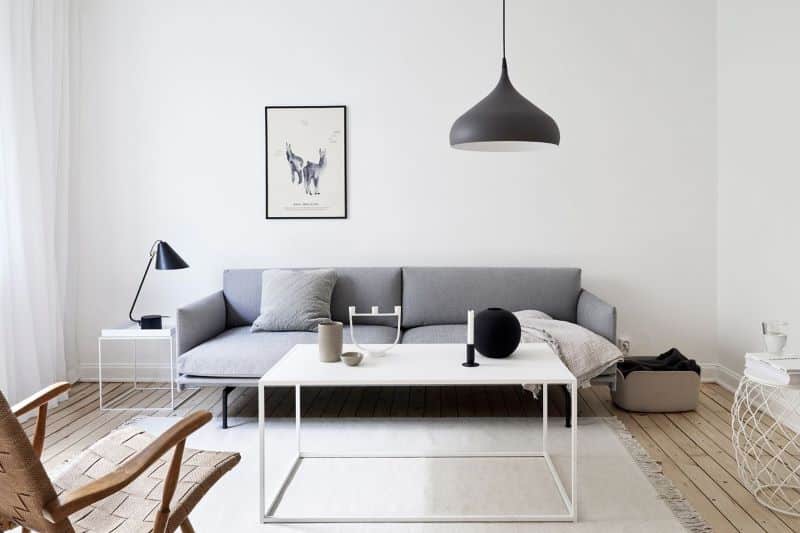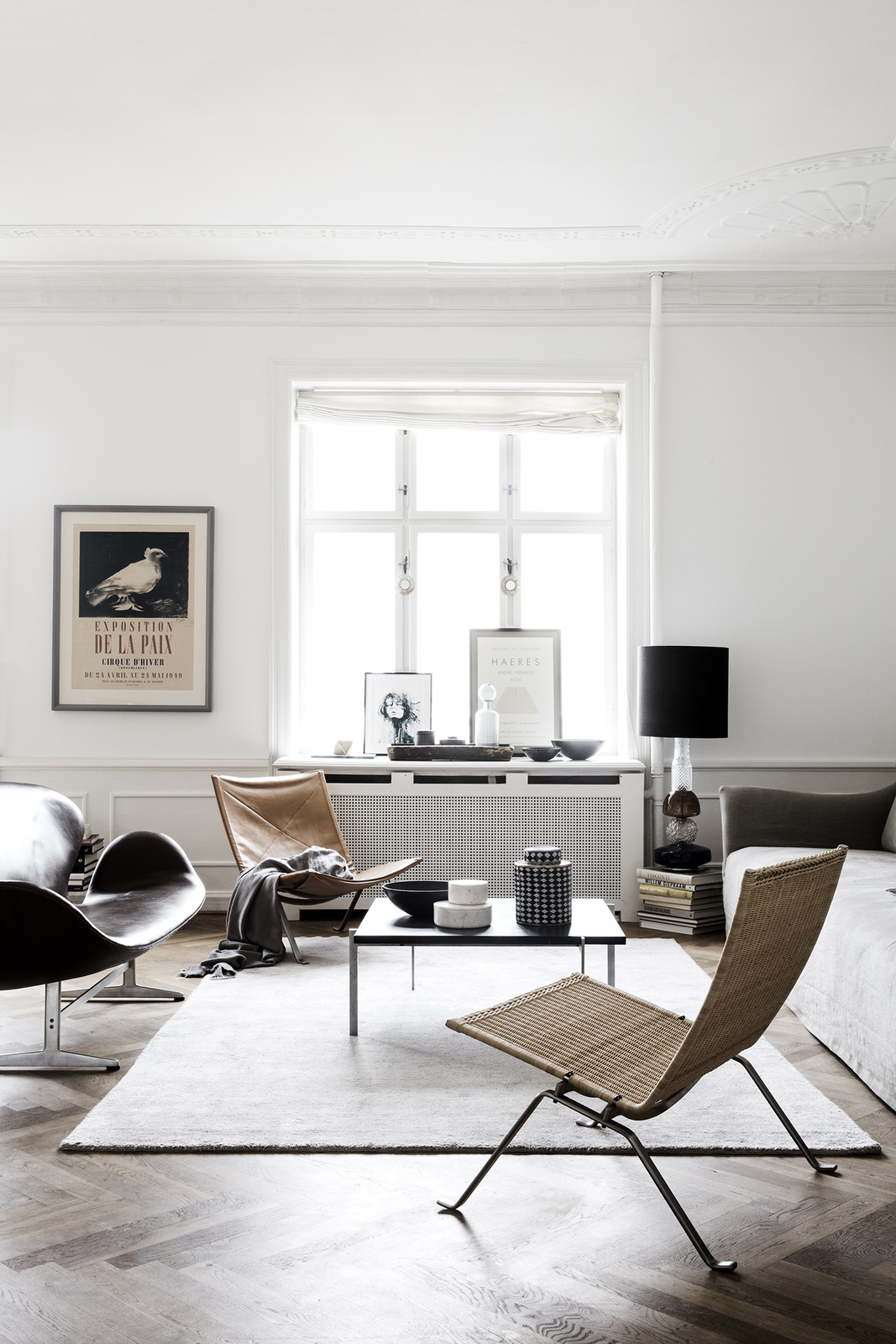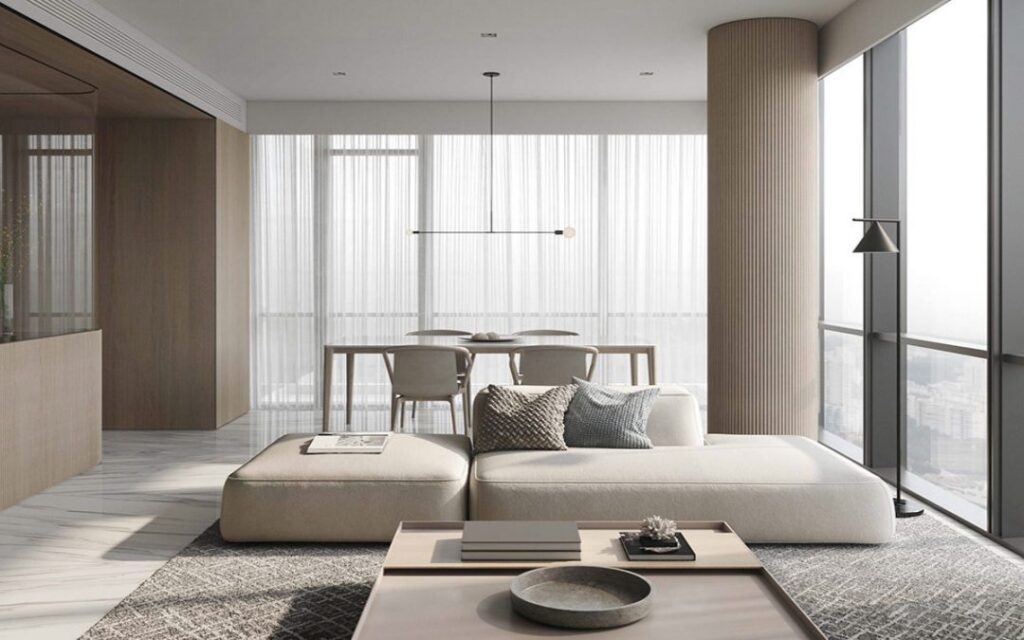The origin of the word “minimal” is due to Richard Wollheim, a british art philosopher, who in 1965, in the “Arts Magazine”, wrote an article about reducing everything to the essential.
As the term itself suggests, the minimalist style tends in fact to simplicity, to the elimination of the superfluous and decoration. In their place, particular attention is paid to functionality, balance, order, form and usefulness.
THE ELEMENTS OF MINIMAL STYLE
The color preferred by designers who refer to this purely contemporary style without a doubt is white, possibly accompanied by soft colors, never gaudy not to shift attention to detail. It is very apreciated the use of a contrast with black, to increase perception of the space.
Few encumbrances, relaxing environment and “easy” to live, aimed at functionality. For example:
- “Container beds” to save space and maximize utility
- wardrobes with sliding doors
- mirrors possibly without frames or with thin frames (also used to increase the perception of space)
- a living room-kitchen, with an “island” useful for preparing meals but also useful for separating the two spaces
- large and flashy chandeliers are not recommended, in their place low-energy recessed spotlights and metal stele lamps: the goal remains to capture natural light as much as possible
- lacquered furniture that reflects the light (no to the knickknacks)
- glass tables, with a transparency that almost eliminates the heaviness of other materials.
Shortly, it’s all about working on primary, geometric elements, regular lines and shapes, all in the name of functionalism.

MODERNITY AND MINIMAL PHILOSOPHY
The meaning of a minimal choice, in terms of philosophy, allows a double reading, which can be already observed by the development of modern architecture.
First of all, it is imperative to note that the trend towards the abolition of the decorative element and utilitarianism is a typically modern fact.
Eliminating waste and maximizing “profit” can in fact be considered, in some ways, expressions of economism and of the scientific method which affirm itself with modernity. After all, from this two elements come the capitalist-liberal model and the socialist model and the elimination of the superfluous becomes an obligation with the advent of mass society.
LE CORBUSIER: “THE HOUSE IS A MACHINE FOR LIVING”
At the beginning of the last century, a rationalist style based on these same principles had established itself in architecture. Even before the Great War, in fact, the Austrian architect Adolf Loos insisted on the uselessness of the decoration, laying the foundations for what will then be precisely rationalist architecture.
But it is the famous Le Corbusier that goes down in history for its “modernity devoid of stylistic-aesthetic intentionality, which arose directly from the correct development of well-posed problems”.
The house, for the Swiss-French architect, is nothing more than a “housing tool”, a “machine for living”, which aims at perfection in the purely functional sense of the term.
The Modern Movement is characterized, according to the criteria summarized by Bruno Taut in 1929, in offering the best possible utility, in the relationship between building and purpose and in beauty conceived only in by its function.
It goes beyond the individualistic detail, but also beyond the local and identity characterizations: it is an architecture unifying but also homologating. That’s why, the building boom of the sixties and seventies ends up to a standardization of the elements and reduction of living space, lending support to the needs of massive urbanization and public housing.
In short, it is a solution that responds well to even the most “profane” needs of modernity: no ideal beyond the economic fact, but only practical functions to be fulfilled at the minimum cost, without romantic frills or supernatural demands.

THE OTHER SIDE OF THE COIN: A “ZEN” STYLE
Although minimalist design is an expression of modern culture, the other side of the coin hides a “Zen” interpretation of its philosophy in pure form.The essential, in this case, corresponds in fact to a spiritual need that rejects the superfluous and consumerism in the name of a return to the origin, which is also well suited to the affirmation of the concept of sustainability and architecture and green design, for greater harmony with nature. The elimination of everything unnecessary is functional in the search for an inner balance that is expressed in the search for an external order, with natural light that favors meditation, relaxation, reading, a sense of peace human-sized. As we see, it is a reading that recalls the ancient natural philosophies and represents in a certain sense a refusal to the affirmation of a “dark” modernity and utilitarian.
MINIMALISM IS NOT GIVING UP BEAUTY AND IDENTITY
So, if you intend to make a minimal choice it is good to know the difference between these two different interpretations of such a modern style: the “how” and the “why” of the choice, in fact, will give rise to very different from each other. “Less is more” but do not give up beauty and identity, your inner needs, your comfort. Take advantage of the minimal style to find yourself.

